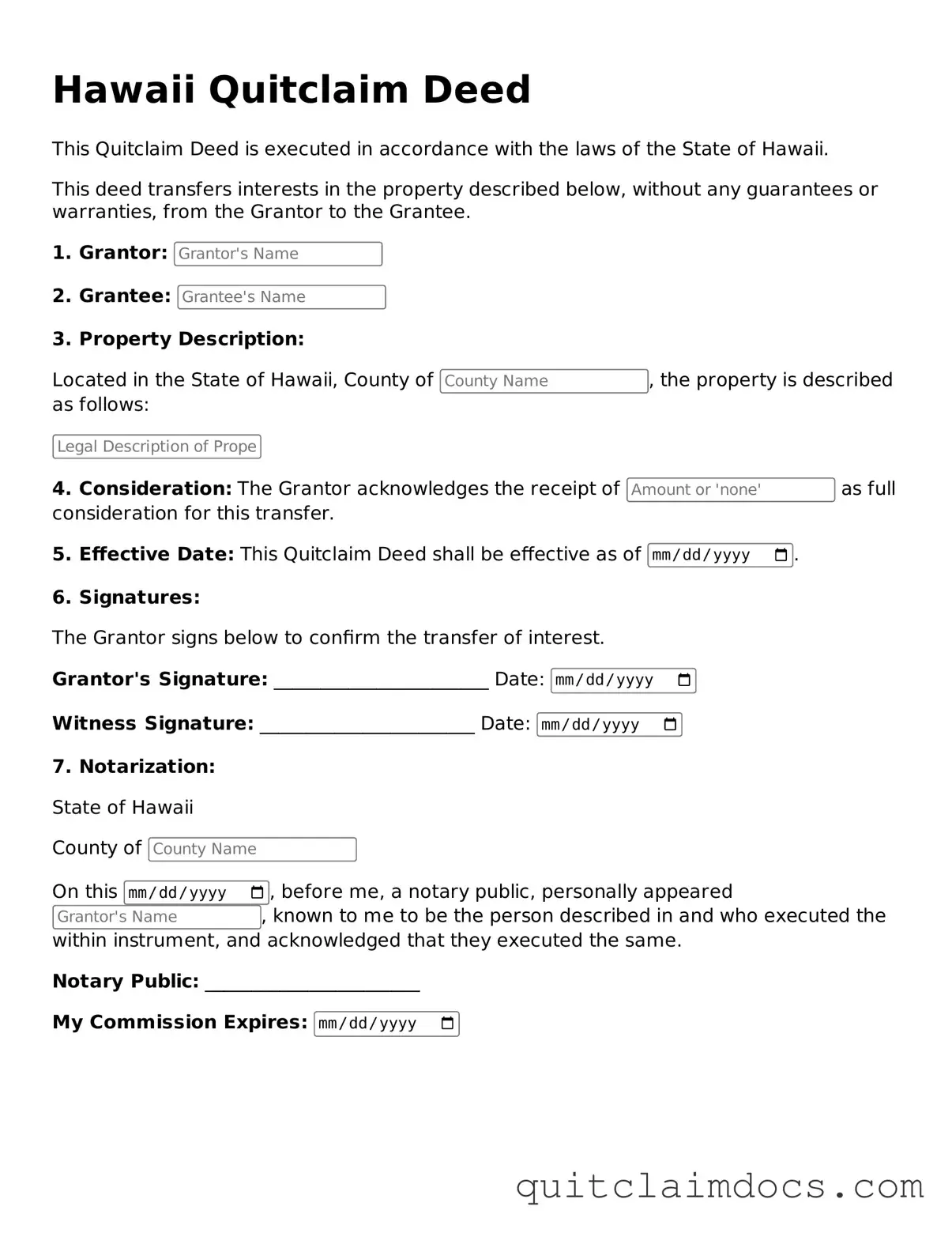Free Quitclaim Deed Template for Hawaii
A Hawaii Quitclaim Deed is a legal document used to transfer ownership of real estate from one party to another without any warranties. This form allows the grantor to relinquish their interest in the property, providing a straightforward way to convey title. To proceed with your property transfer, fill out the form by clicking the button below.
Customize Quitclaim Deed Online
